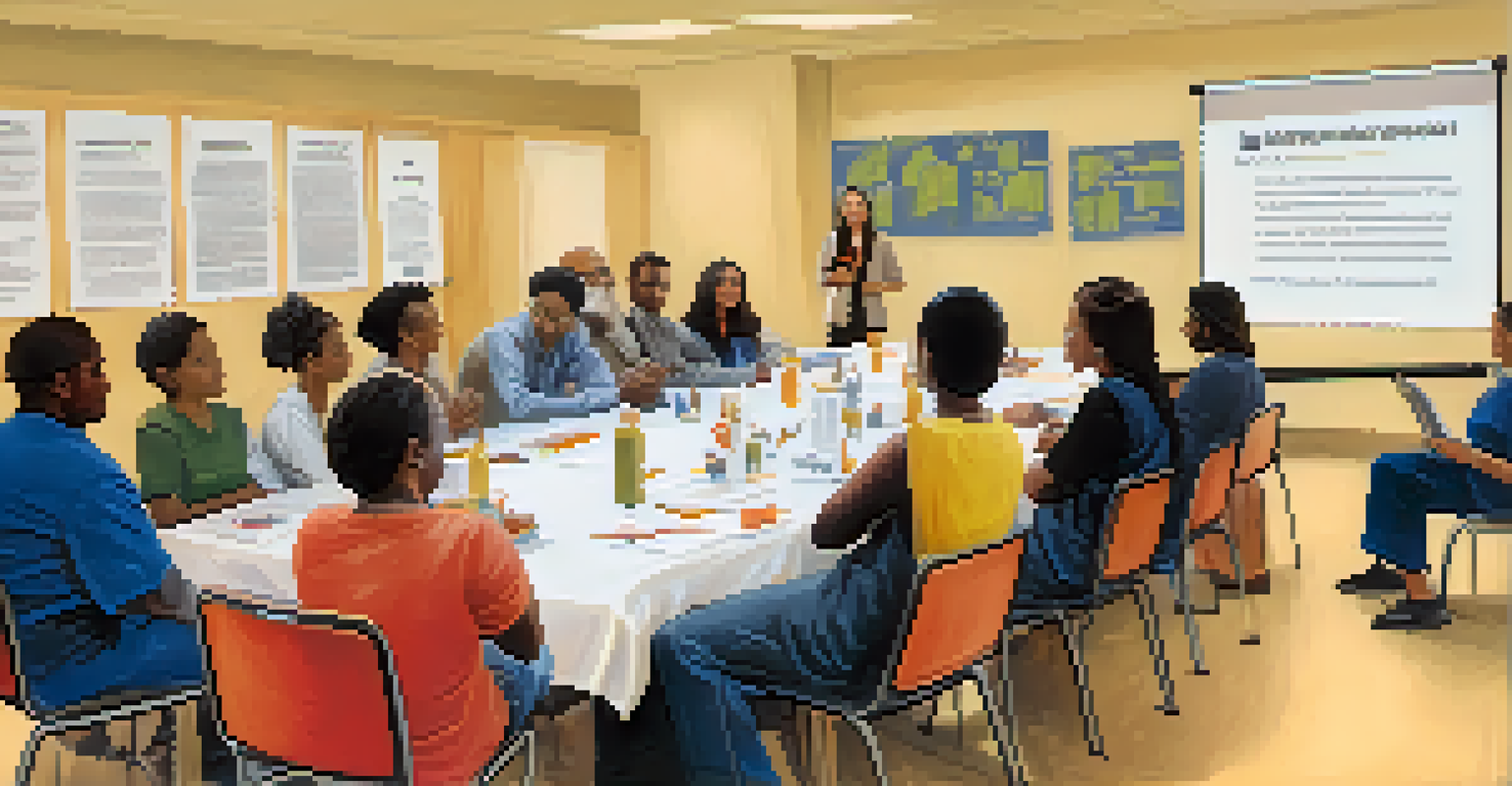The Role of Bystanders in Self Defense Situations

What Defines a Bystander in Self-Defense Situations?
A bystander is someone who witnesses an event without being directly involved. In self-defense situations, this person can play a crucial role in either supporting the victim or escalating the conflict. Their actions can influence the outcome significantly, making it essential to understand their potential impact.
The opposite of courage is not cowardice, it's conformity.
For instance, imagine a scenario where someone is being attacked in a public park. A bystander who intervenes or calls for help can deter the attacker and provide safety to the victim. Conversely, if a bystander simply watches without taking action, that could lead to a more severe situation.
Ultimately, the definition of a bystander extends beyond passive observation; it encompasses the choices they make and the responsibility they carry in the heat of the moment.
The Psychological Impact of Witnessing Violence
Witnessing violence can trigger a range of psychological responses in bystanders, including shock, fear, or confusion. These emotions can hinder their ability to act effectively, leaving them paralyzed when decisive action might be needed. Understanding this psychological barrier is essential for fostering proactive, supportive behavior.

For example, studies show that bystanders often experience an 'empathy gap' when observing violence. They might feel sorry for the victim but struggle to overcome their fear of danger or the unknown consequences of intervening. This internal conflict can prevent them from stepping in when help is most needed.
Bystanders Influence Crisis Outcomes
A bystander's actions, whether supportive or passive, can significantly impact the resolution of a self-defense situation.
Recognizing these psychological factors can empower bystanders to prepare mentally for such situations, transforming fear into actionable support.
Legal Implications for Bystanders in Self-Defense Cases
The legal landscape surrounding bystander intervention can be complex. In some jurisdictions, laws protect individuals who attempt to help others in peril, while in others, intervening can lead to legal repercussions. Therefore, understanding these laws is crucial for anyone who might witness an act of violence.
Inaction breeds doubt and fear. Action breeds confidence and courage.
Consider a situation where a bystander intervenes to stop an assault. If the intervention is deemed reasonable and necessary, the bystander may be shielded from liability. However, if the intervention escalates the situation or causes further harm, the bystander could face legal consequences.
Being aware of the legal framework can guide bystanders on how to act appropriately without overstepping boundaries.
How Bystanders Can Effectively Intervene
Intervening in a self-defense situation doesn't always mean physically confronting the aggressor. Bystanders can employ various strategies, such as calling the police, shouting to distract the attacker, or providing assistance to the victim. Each of these actions can be effective in diffusing a tense situation.
For example, simply shouting, 'Hey! Stop that!' can draw attention to the incident and deter the aggressor. Alternatively, a bystander might choose to approach the victim and offer support, helping them feel less isolated and more empowered.
Psychological Barriers to Action
Bystanders often experience emotional barriers, such as fear or confusion, which can hinder their ability to intervene effectively.
By understanding and practicing these intervention techniques, bystanders can become valuable allies in ensuring safety during crises.
The Importance of Bystander Training Programs
Bystander training programs equip individuals with the skills to respond appropriately in emergencies. These programs teach participants how to recognize risky situations, intervene safely, and provide support to victims, ultimately enhancing community safety. Such training is increasingly recognized as essential in fostering responsible bystander behavior.
For instance, many universities and community organizations have implemented training sessions that focus on conflict resolution and de-escalation techniques. Participants learn to assess situations critically and make informed decisions when witnessing violence.
By promoting these training opportunities, communities can cultivate a culture of proactive intervention and support.
Recognizing Your Own Limitations as a Bystander
It's essential for bystanders to acknowledge their limits and prioritize their safety. While the urge to help is commendable, rushing into a volatile situation without understanding the dynamics can lead to unintended consequences for everyone involved. Self-awareness is key to making informed decisions.
For example, if a bystander feels threatened or outmatched, it may be wiser to call for professional help rather than confront the aggressor directly. Recognizing when to step back can ensure that the situation does not escalate further.
Training Enhances Bystander Response
Bystander training programs equip individuals with essential skills to recognize risky situations and respond appropriately.
Understanding personal limits allows bystanders to act judiciously, contributing positively to the situation without putting themselves at risk.
Creating a Culture of Responsibility Among Bystanders
Cultivating a culture of responsibility means encouraging individuals to take an active role in their communities. When people are educated about the importance of bystander intervention, they are more likely to act when witnessing violence. This cultural shift can lead to safer environments for everyone.
For instance, community campaigns that highlight real-life stories of successful interventions can inspire others to act. Additionally, discussions around empathy and moral responsibility can transform passive onlookers into engaged community members.

Promoting this culture requires collective effort, but the benefits of a supportive community are immeasurable. Together, we can create a safer world by encouraging responsible bystander behavior.